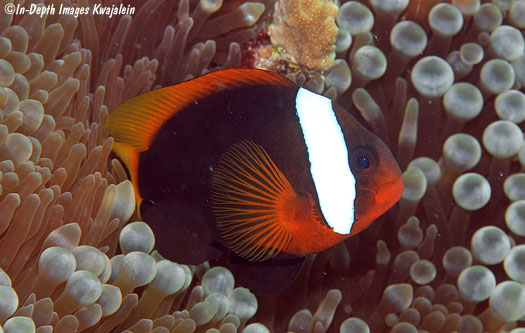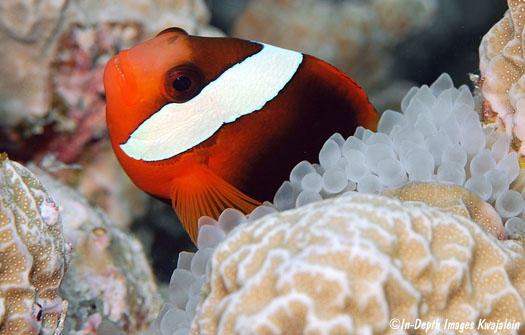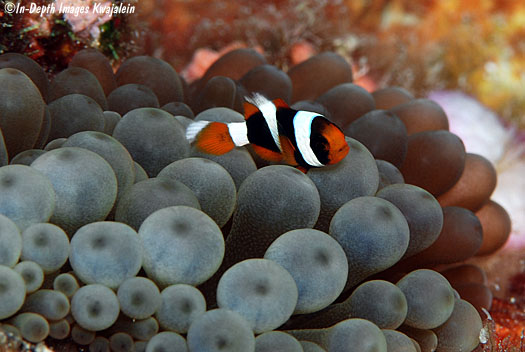
Amphiprion melanopus is mostly red and black, with a single wide white band behind the eye as an adult. In the Marshalls, they are most often seen in the anemone Entacmaea quadricolor, although almost exclusively in the colonial phase. Entacmaea quadricolor is found commonly in two forms, one consisting of many small individuals packed together often between branches of living coral, and the other usually larger and solitary, and most often inhabited by a pair of Amphiprion tricinctus. The colonial anemones nearly always are inhabited by numerous A. melanopus of varying sizes, and are usually are in relatively shallow water, about 2 to 15m depth, on lagoon reefs, pinnacles, and the seaward reef.
We know of one Amphiprion melanopus inhabiting a large Stichodactyla mertensii anemone on the slope of a Kwajalein Atoll lagoon pinnacle. We first saw the fish in this anemone on 30 August 1993, and it (or one exactly like it) appeared to have been the sole inhabitant of this particular anemone for 17 years at least. Both anemone and fish are now gone (as of 2016).
This species is also called the red and black or dusky anemonefish, mostly to distinguish it from the similar Amphiprion frenatus, also called a tomato clown. A. frenatus does not occur in the Marshalls.


Juvenile Amphiprion melanopus generally have two additional white bands, one midbody and the other on the caudal peduncle. They lose these as they grow.

Created 1 September 2010
Updated 16 March 2017